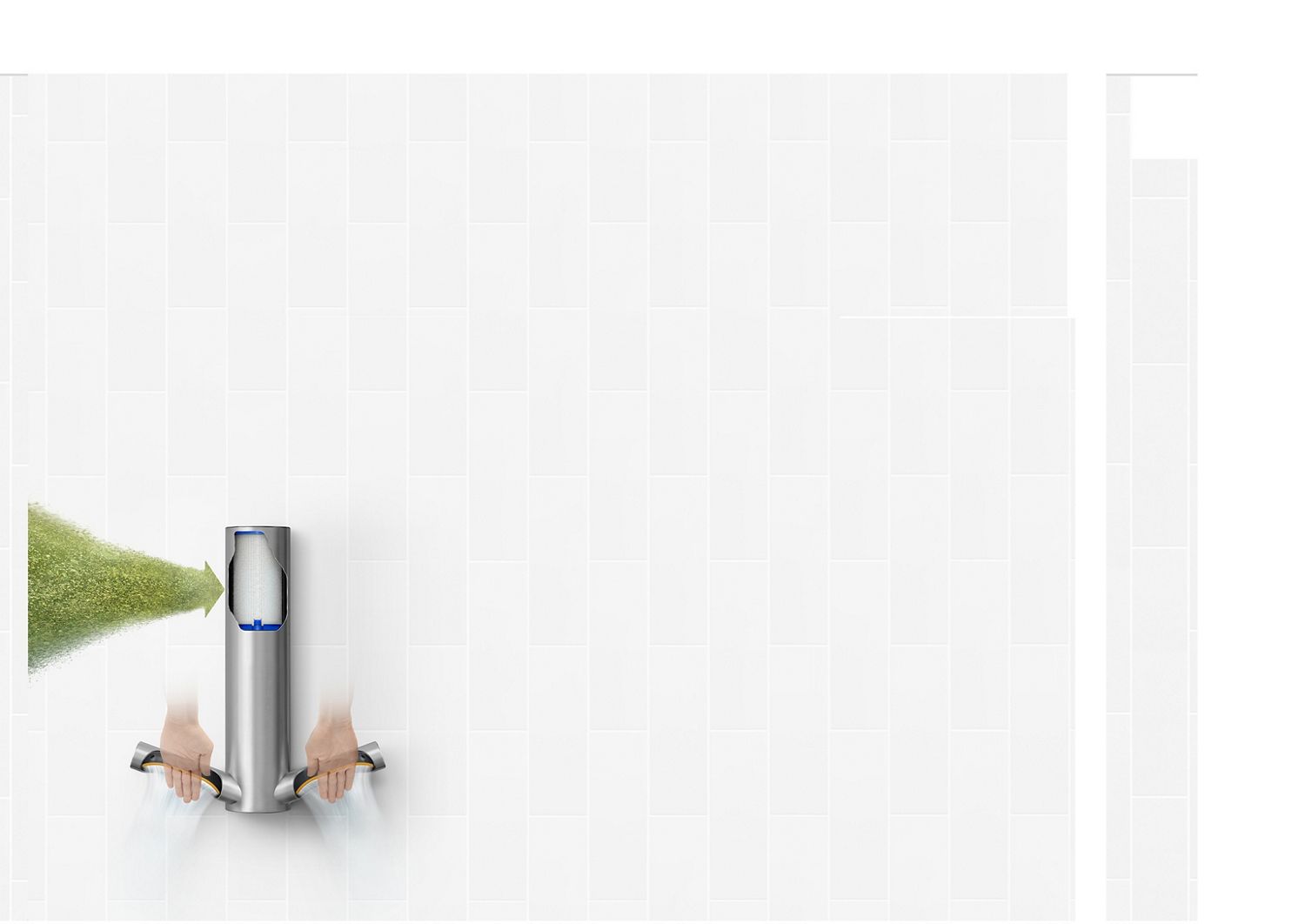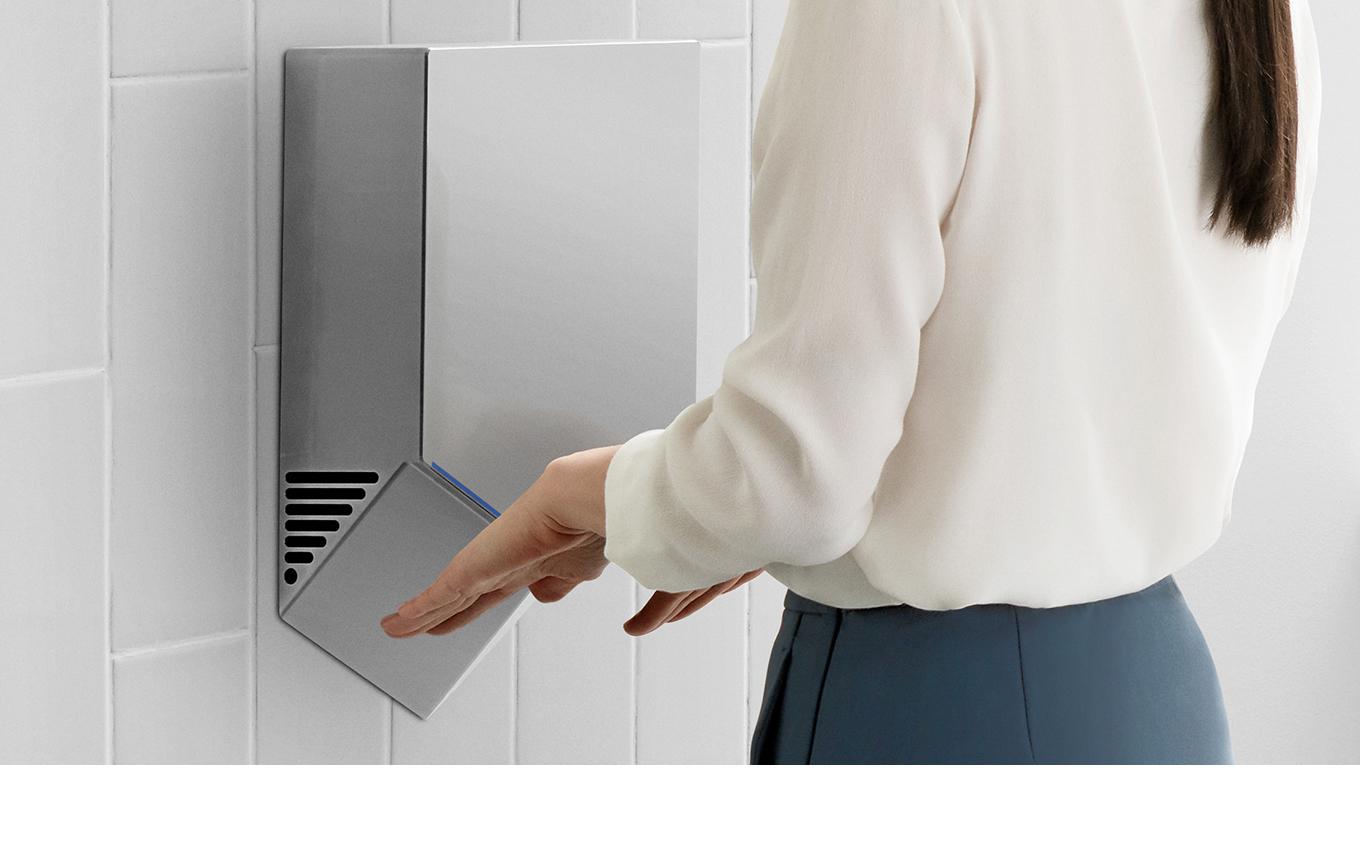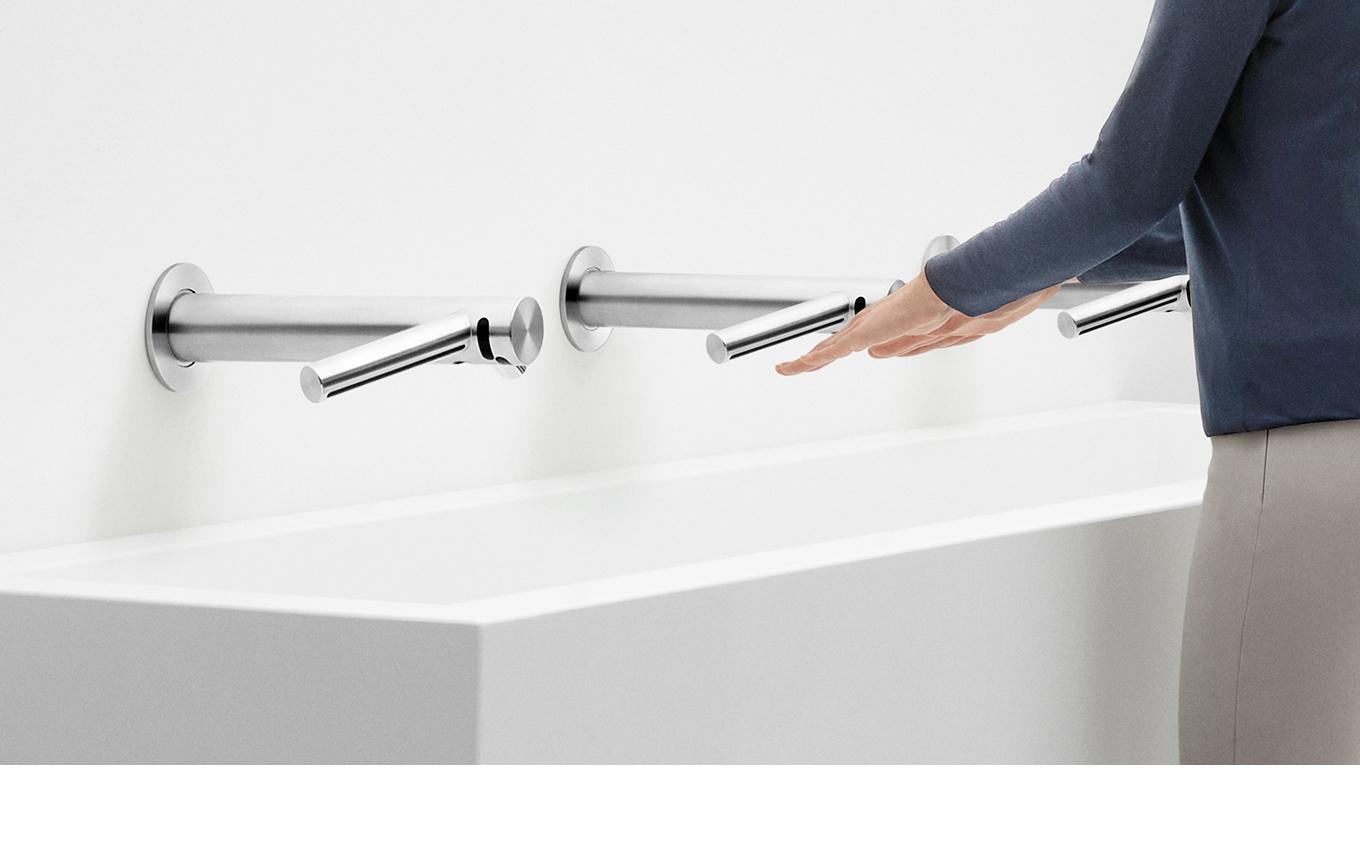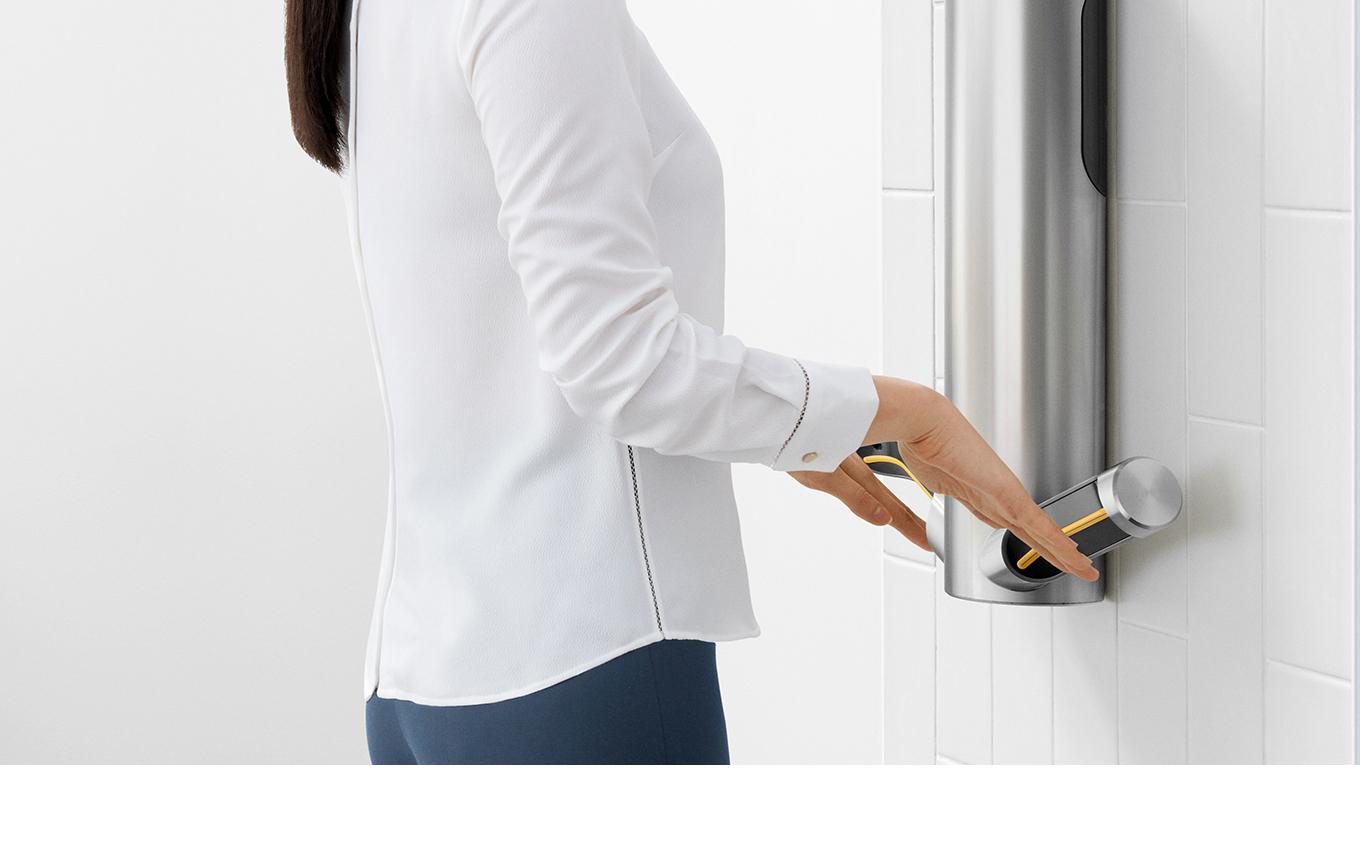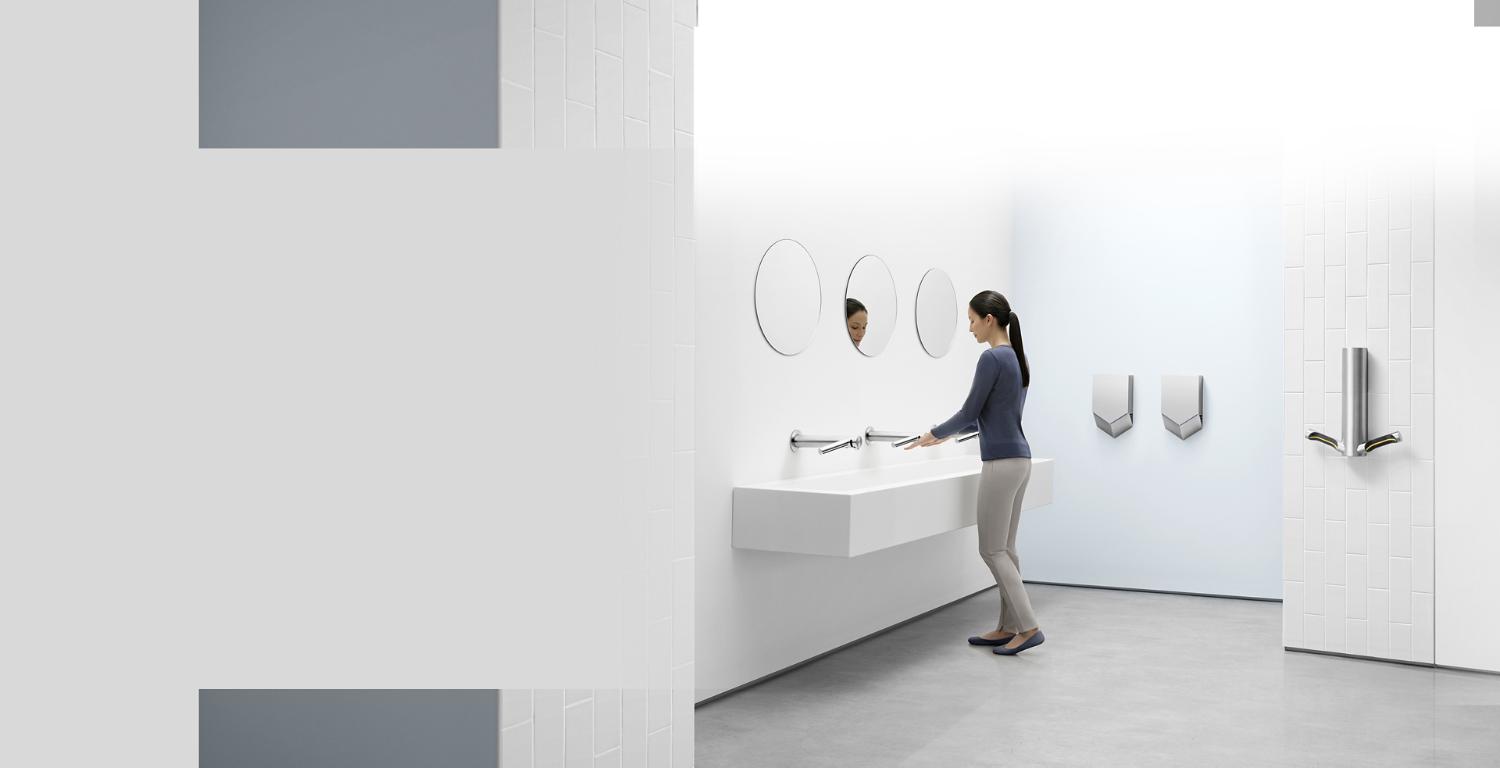
Uniquely engineered, hygienic hand drying technology
Every Dyson Airblade™ hand dryer is sensor-operated and touch-free, with HEPA filtration to purify the air used to dry hands.
Powered by a Dyson digital motor, Dyson Airblade™ hand dryers are the fastest to dry hands hygienically with HEPA-purified air.
While removing single-use paper waste from the washroom.
Only a Dyson dries like a Dyson.
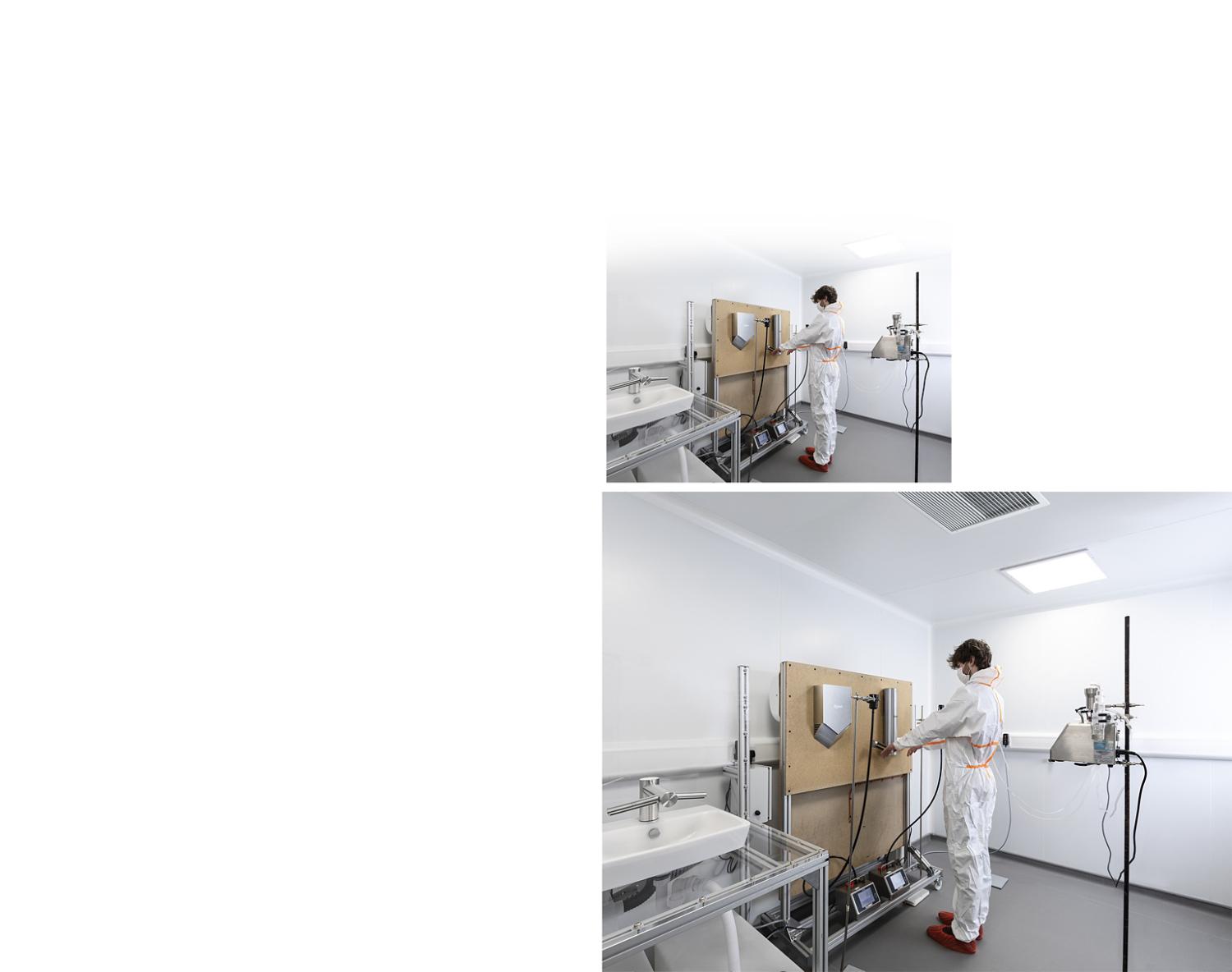
Hygienic and independently proven safe²
Touch-free. HEPA-filtered. No paper waste.
Proven to aerosolize no more than paper towels.³ Without the waste.

How the independent tests worked
Our objective was to see how many aerosols were generated by Dyson Airblade™ hand dryers compared to drying with paper towels, or washing but not drying.
Independent testing was carried out by Airmid Healthgroup in a controlled environment using a sink, paper towels, and Dyson Airblade W+D, dB, V and 9kJ hand dryers. Each experiment was carried out three times with paper towels and hand dryers being used in seperate experiments.
Results proved that each Dyson Airblade™ hand dryer had no significant impact on the surrounding air. This supports previous studies that they're as hygienic as paper towels.
V Total viable counts (bacteria) samplers P Particles/aerosols samplers
What the independent tests showed
Dyson further analysed the results of this work and wrote a paper, which has been peer-reviewed and published in Frontiers in Public Health. The study concluded that drying hands with jet hand dryers does not significantly increase aerosols or bacteria in air compared to walking and washing hands or drying hands with paper towels. Read the full article and study results here.
-
Proven to aerosolize no more than paper towels.³ Without the waste.
-
Proven to have no significant impact on the surrounding air.³
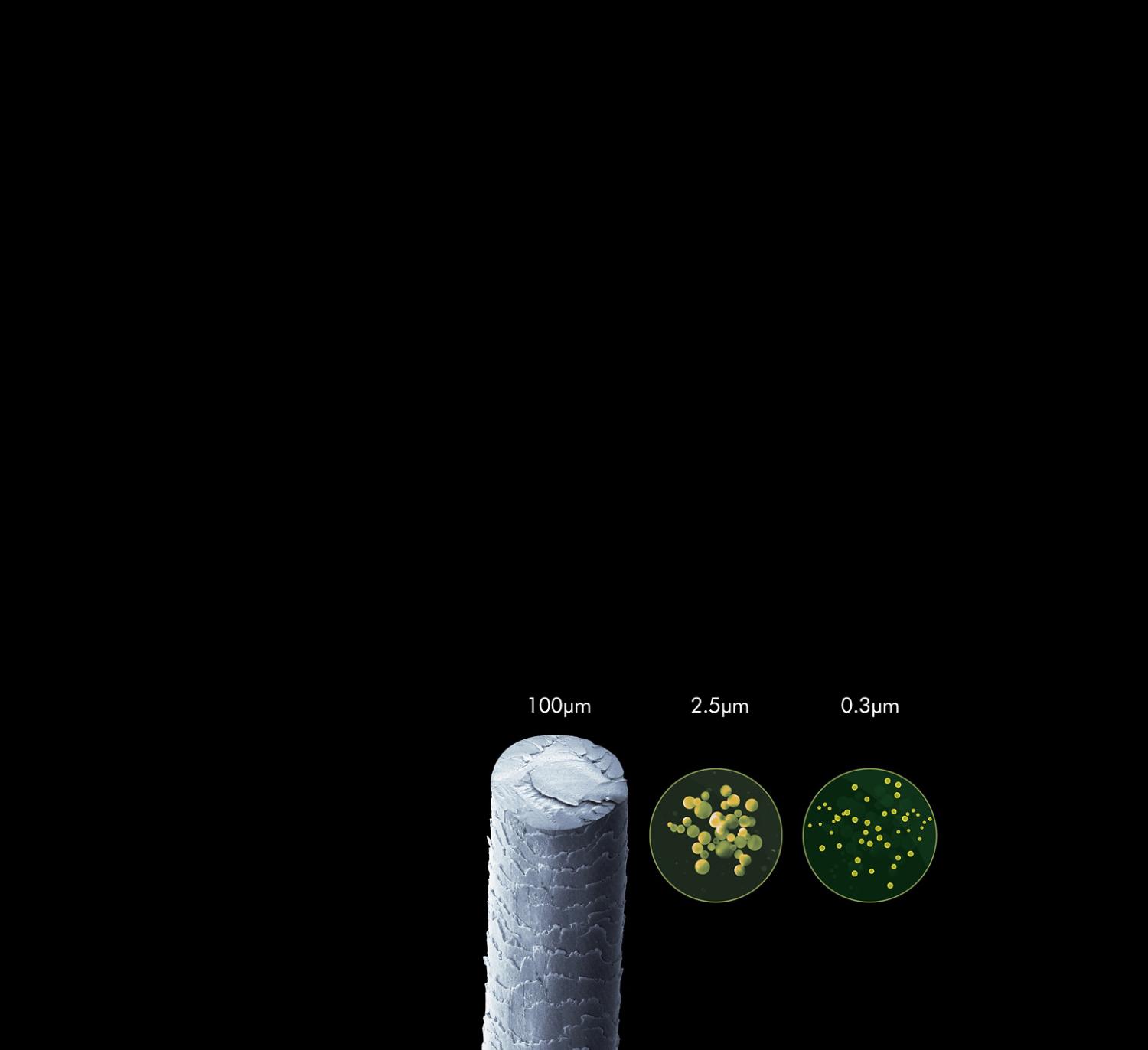
What is aerosolization?
Aerosolization is the action of creating aerosols. Aerosols are tiny liquid or solid particles, or a mix both, suspended in a gas (e.g. air).
Their composition can vary depending on how they are formed and may include bacteria or viruses. Aerosols size can vary in size, for example they can be as small as 0.3 microns.
While larger, heavier particles tend to drop to the floor, these smaller particles are more likely to become suspended in the air – or ‘aerosolized’. Aerosols are all around us.
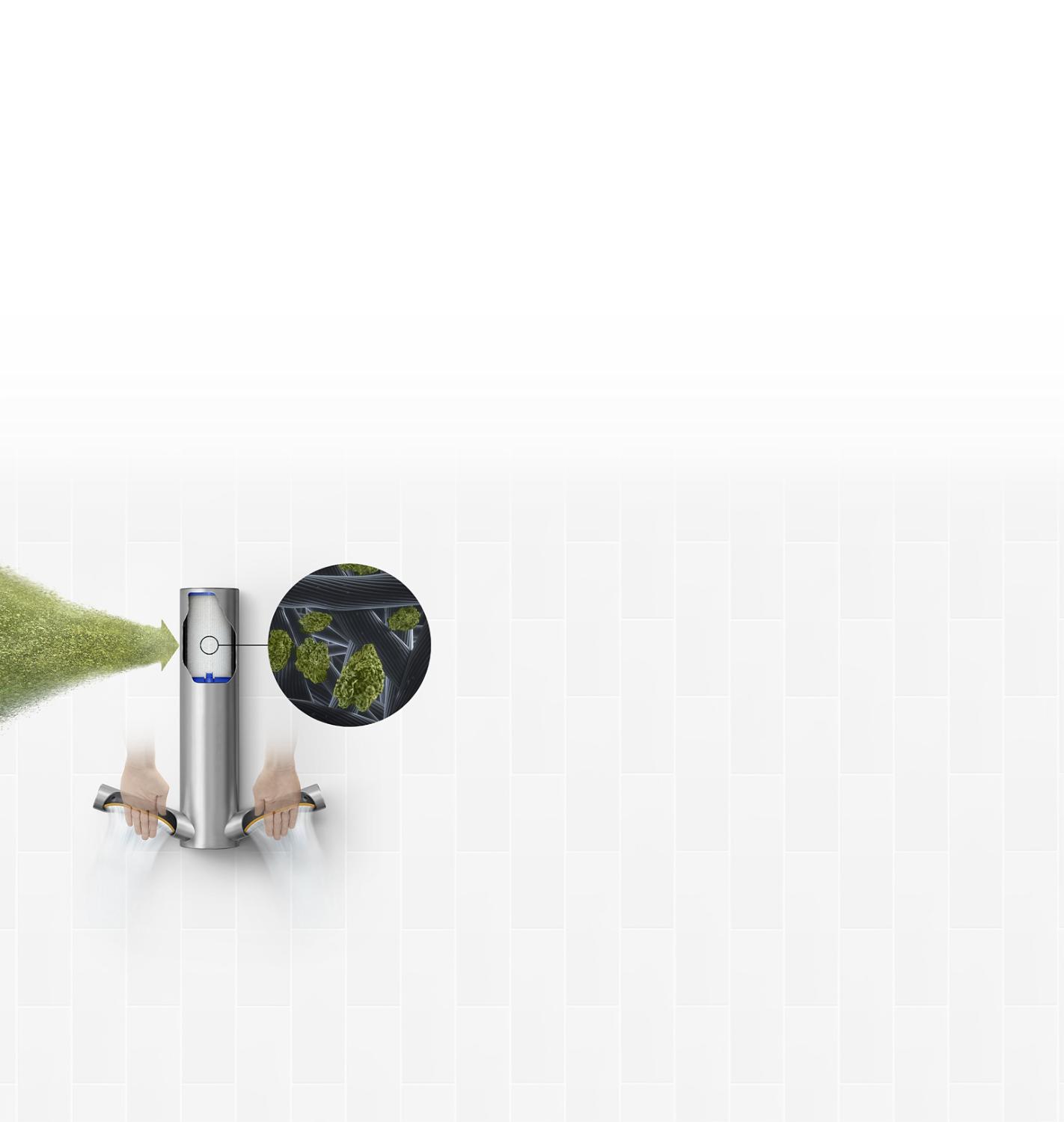
HEPA filters capture particles as small as 0.3 microns
All Dyson Airblade™ hand dryers use HEPA filtration to dry hands with purified air.
Tested and proven to capture 99.97% of particles.⁴
Dry hands with HEPA-purified air, not dirty air.
Touch-free technology
Dyson Airblade™ hand dryers utilize sensor technology. Engineered for a touch-free, hygienic user experience.
These sensors are programmed to detect and automatically dry hands. So it allows users to maintain a distance between their hands and the machine.
-
Dyson Airblade Wash+Dry features infrared LED sensors to automatically detect the hands for both washing and drying to switch between wash and dry modes.
-
Dyson Airblade 9kJ features infrared time-of-flight sensors to trigger HEPA-purified air and are designed for an optimal user experience.
-
Dyson Airblade V features capacitive sensors to automatically turn the HEPA-purified air on and off as hands enter the sensing zone.
Proven hygienic by independent testing
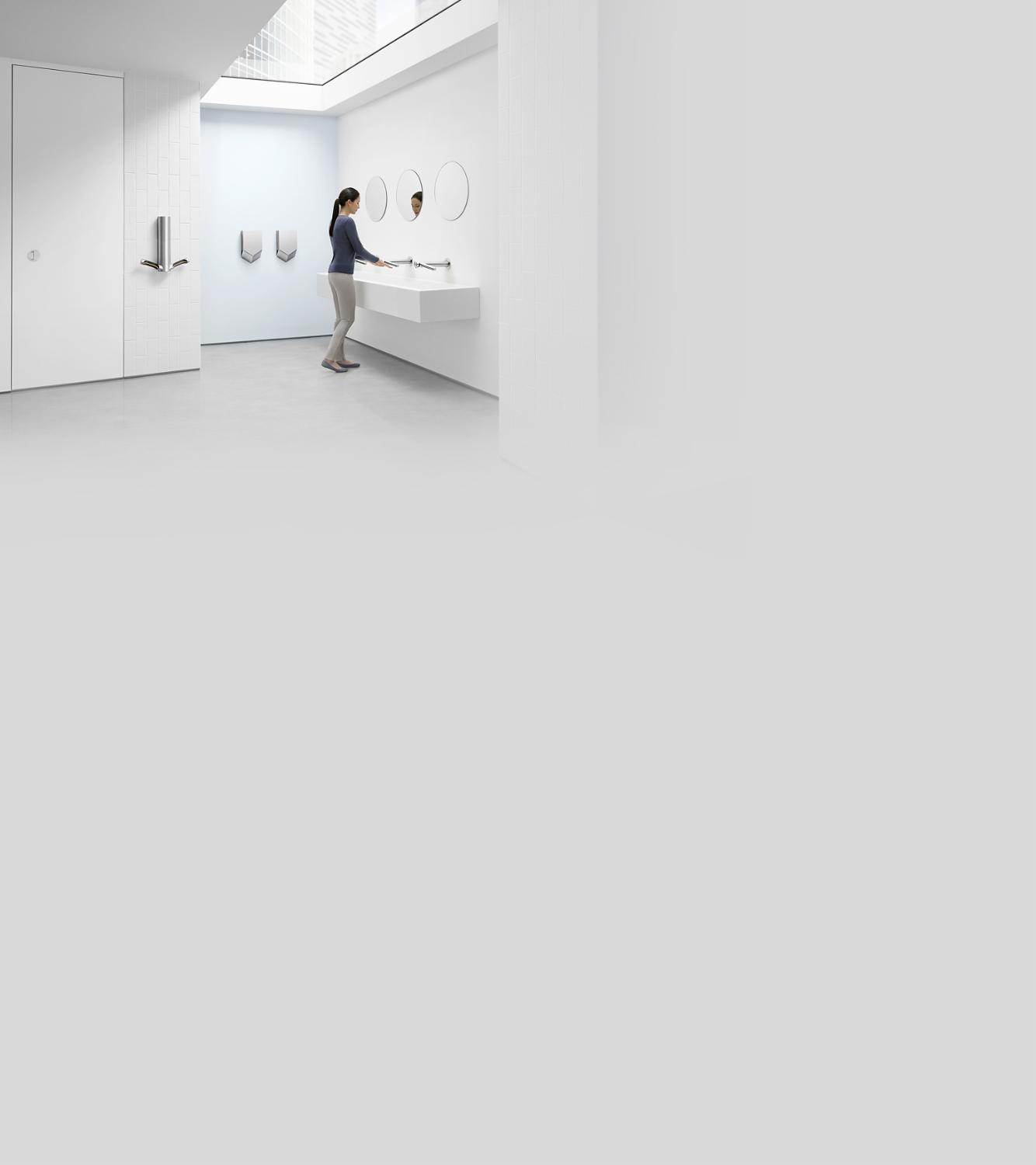
Fast dry time
Thorough hand washing and drying are proven to reduce the spread of bacteria and viruses.
Dyson Airblade™ hand dryers have a dry time of 10-14 seconds¹ and help reduce bacteria on hands.
Proven in restrooms worldwide
Since the original Dyson Airblade™ hand dryer was released in 2006, they’ve been used by millions of people in restrooms around the world.
Although each machine carries a warranty of five years, with proper maintenance they’re engineered to continue drying hands for much longer. And unlike paper towels, a Dyson Airblade™ hand dryer won't run out.
Discover the Dyson Airblade™ hand dryer range

-




Dyson Airblade dB
- Technical specification, PDF, 3.4MB
- Installation guide, PDF, 3.4MB
- Installation guide 2, PDF, 407KB
- Owners manual, PDF, 4.4MB
- Cleaning guide, PDF, 178KB
- Hand washing guide, PDF, 1.5MB
- ADA guidelines, PDF, 47KB
- LEED reference guide, DOC, 569KB
- AB14 LEED v4BD+C, PDF, 3.8MB
- AB14 LEED v4ID+C, PDF, 3.8MB
- AB14 LEED v4O+M, PDF, 3.8MB
-


-


Frequently asked questions
A number of studies are used by the paper towel industry to support bold and inaccurate claims. In general, these studies were not conducted under conditions or scenarios that simulate real life or an actual situation that a person would reasonably experience when using a Dyson Airblade™ hand dryer. Researchers that conducted these studies were only able to achieve such a result by grossly contaminating their gloved hands with bacteria and viruses, and drying them with a Dyson Airblade™ hand dryer without washing their hands first. Conversely, research studies by the University of Bradford (UK) and by the Hong Kong Polytechnic University showed that, when used correctly, Dyson Airblade™ hand dryers actually reduced the bacteria on hands.
Dyson's new independent research into aerosolization shows that that drying hands with a Dyson Airblade™ hand dryer aerosolizes no more than drying with paper towels³ – and that Dyson Airblade™ hand dryers are hygienic and safe to use.²
HEPA stands for High Efficiency Particulate Air. To be a genuine HEPA filter, like fitted in all Dyson Airblade™ hand dryers as standard, the filter must pass test standards EN1822-5 and IEST-RP-CC001.6. Any filter which does not state it is a HEPA filter may not be proven to work to such high levels of efficiency.
Hand washing is a crucial way of reducing the spread of bacteria and viruses. Drying hands properly is an important step in that process as damp hands can spread up to 1,000 times more bacteria than dry hands.⁹ Dyson Airblade™ hand dryers have been proven to be as hygienic in drying hands as paper towels,¹⁰ but without the environmental damage or high usage costs.¹¹
- 1 Dry time determined using Dyson test method 769 based on NSF P335 using a measurement of 0.1g residual moisture.
- 2 Based on findings in a 2019 study by Suen et al. published in Scientific Reports, and a separate independent study of particles (≥0.3 microns) and bacteria in air during hand drying, conducted by a third-party laboratory.
- 3 Based on aerosolization measured during hand drying. Testing conducted by independent third-party lab.
- 4 HEPA filter tested to IEST-RP-CC001.6, by an independent testing laboratory, under prescribed test conditions.
- 5 Snelling, et al., J. Applied Microbiology 110.1 (2011): 19-26.
- 6 Global survey conducted in July 2020 across 14 countries worldwide (UK, DE, ES, FR, IT, NL, US, CA, MX, CN, JP, MY, SG, AU) with 8758 respondents in total (1,094 in the US), aged 18 years-old or above. Individual percentages vary per country.
- 7 Tested in an external lab according to ISO 22196 against E. coli, Salmonella enterica, Staphylococcus aureus and Klebsiella pneumonia and ISO 21702 against H3N2 (influenza) virus.
- 8 Energy consumption determined for Eco mode.
- 9 D. R. PATRICK, G. FINDON and T. E. MILLER: Residual moisture determines the level of touch-contact-associated bacterial transfer following hand washing, Epidemiol. Infect. (1997): 119, 319-325.
- 10 R. Mutters, S.L. Warnes, J. of Hospital Infect. (2019): 101 408-413.
11 Average electricity price $0.13/kWh as of October 2023. For calculations visit www.dyson.com/calcs.







